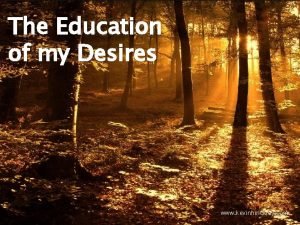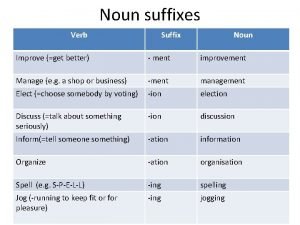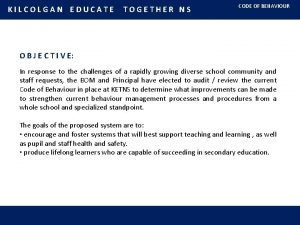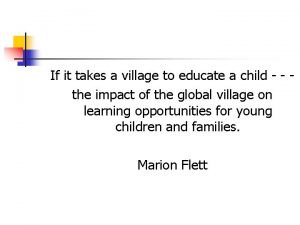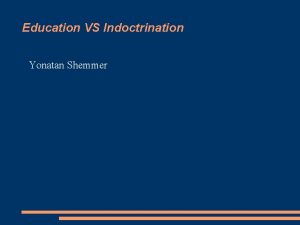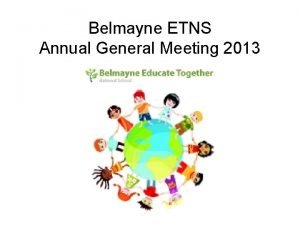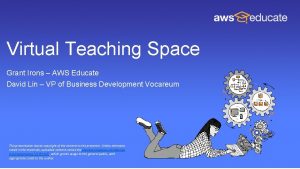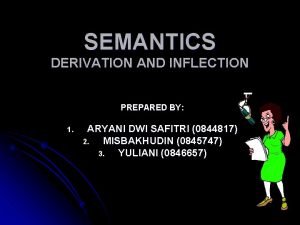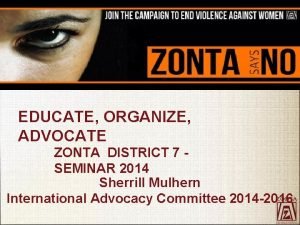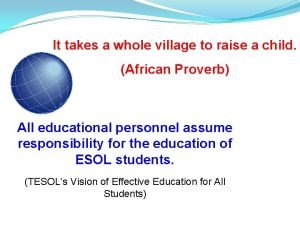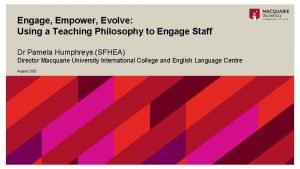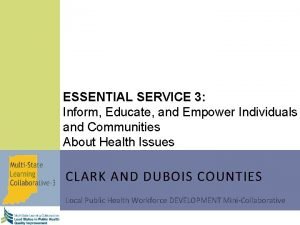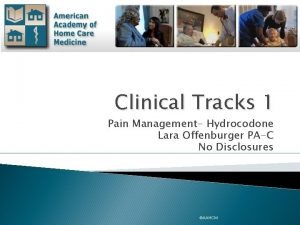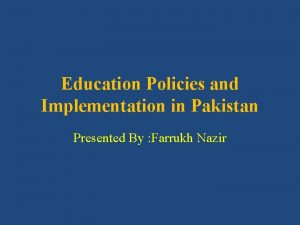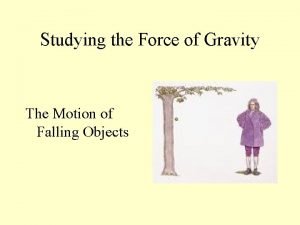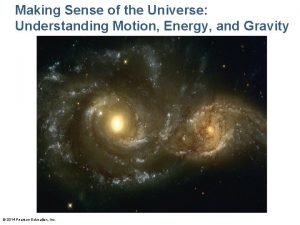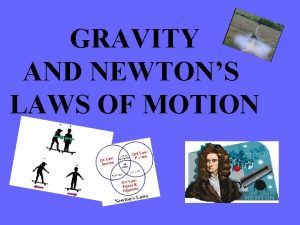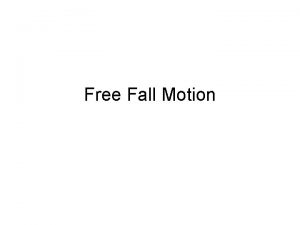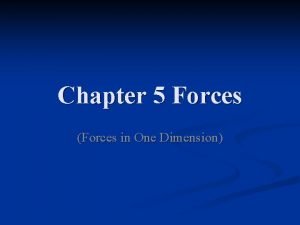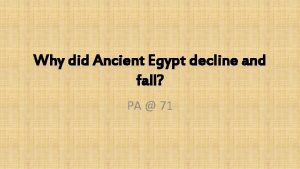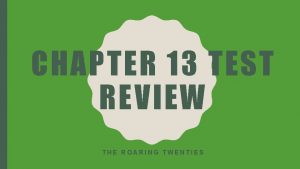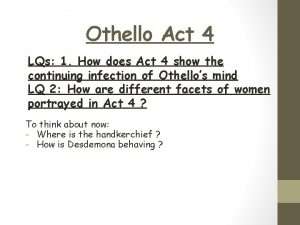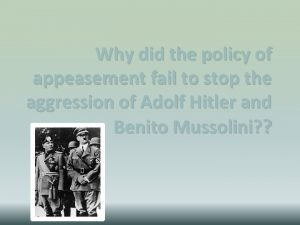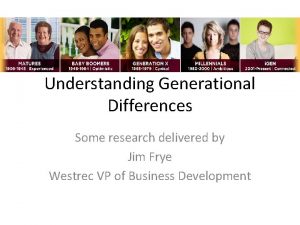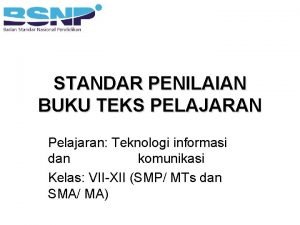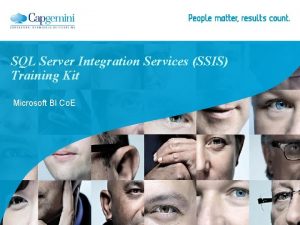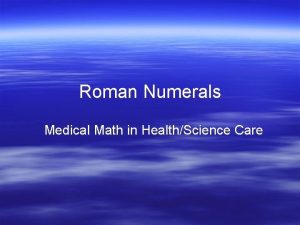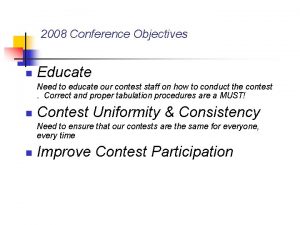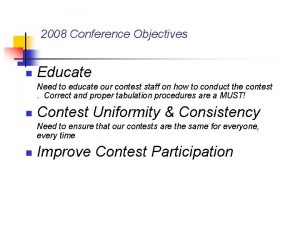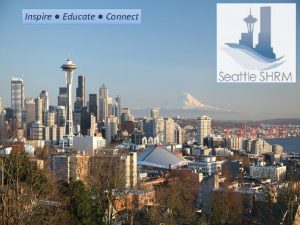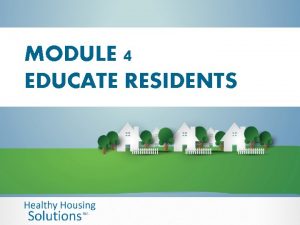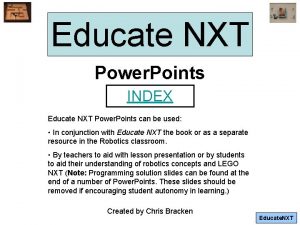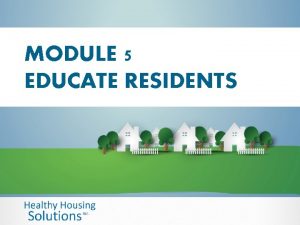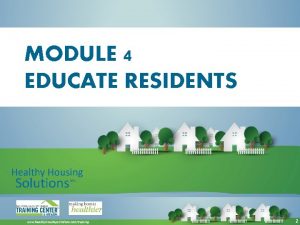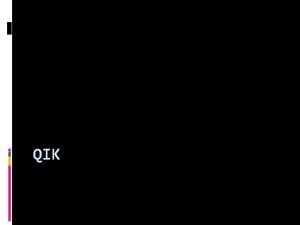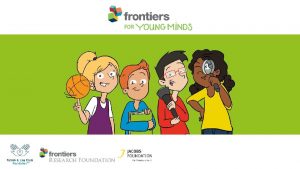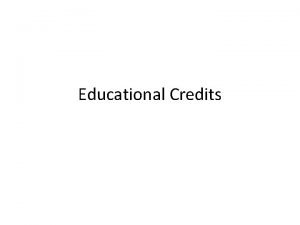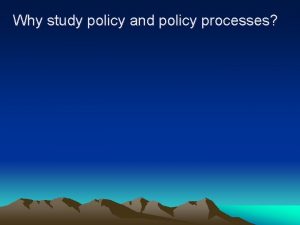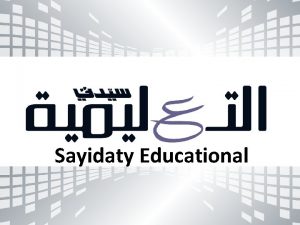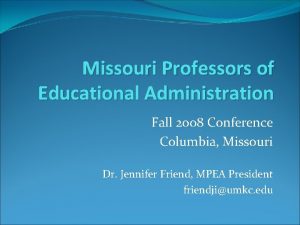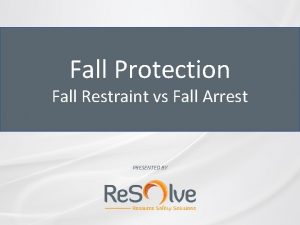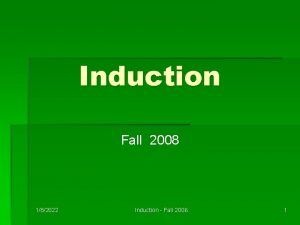Educational Policy Fall 2008 Why do we educate
















































- Slides: 48

Educational Policy Fall, 2008 Why do we educate? The essential question for understanding educational policy. Nick Michelli Presidential Professor Ph. D. Program in Urban Education

Why do we educate? § For the most substantive answers to this question, it is a matter of worldview. § George Lakoff, Moral Politics and Whose Freedom? : The Battle over America’s Most Important Idea

W. B. Gallie’s Contribution § Essentially Contested Concepts: § Inherently subject to multiple interpretations, depending on your values, concerns, experiences, goals, and beliefs § Democracy, freedom, social justice, and, yes, education.

What is the context in which we work? § There is increasing focus by policy makers and others on student achievement measured by standardized tests (NCLB). § There is increasing pressure to tie teacher compensation to student achievement measured by standardized tests. (The Teaching Commission, Denver, NYC) § What matters is what we measure. (Al Shanker) § Not everything that we counts, and not everything that counts can be counted (Al Einstein)

A Perfect Storm § Standards Based Schooling § Value-added Accountability—measuring the impact of teachers on individual student performance on tests. § Evidence Based Practice with confidence in tests § Continued inadequate funding of public urban education

What are the public purposes of education? 1. Preparing students to have access to knowledge and critical thinking within the disciplines.

Analysis Preparing students to have access to knowledge and critical thinking within the disciplines. § Is this a recognized public purpose of education? What evidence is there that it is or is not? § Are there any essentially contested concepts subject to worldviews here? How do you define them? Do any theoretical constructs support or refute your position? § What evidence is there in policy that this is or is not a public purpose of education?

Michelli’s Analysis Preparing students to have access to knowledge and critical thinking within the disciplines. § The meaning of access to knowledge § The meaning of critical thinking § Why within the disciplines? § What about procedural knowledge?

Critical Thinking: What can it be? § Cognitive psychologists vs. Philosophers § Matthew Lipman’s conception § CT is thinking that leads to good judgment because it is: § based on criteria, § sensitive to context, and § open to correction in a community of inquiry.

What are the public purposes of education? 2. Preparing students to be active, involved, socially just participants in our democracy.

Analysis Preparing students to be active, involved, socially just participants in our democracy. § Is this a recognized public purpose of education? What evidence is there that it is or is not? § Are there essentially contested concepts subject to worldviews? How do you define them? Do any theoretical constructs support or refute your position? § What evidence is there in policy that this is or is not a public purpose of education?

Michelli’s Analysis Preparing students to be active, involved, socially just participants in our democracy. § § Why active and involved? Why “participants” and not citizens? What does “socially just” mean? What does democracy mean?

What are some of the goals when we focus on preparing students for democracy? § Emphasis on critical thinking and making judgments. § Developing empathy and respect for alternative positions. § Learning to argue well for our positions and how to compromise § Learning to participate in community meetings § Learning to give reasons for positions § Creating classroom communities of inquiry

What is the context in which we work? § In 35 of 48 states, districts enrolling the highest proportions of minority students have substantially fewer state & local dollars per student than districts with the lowest percentages of minority students. § Education Trust, 2004

What is social justice?

§ Social justice has as its most essential quality the conditions of nonrepression and nondiscrimination. We must examine our society and our lives to assure that we do not discriminate or repress.

For example, in New York the funding gap between high- and low-poverty school districts amounts to $2, 615 per student. This translates into a shortfall of $1 million for a high-poverty elementary school serving 400 children. § Education Trust, 2004

§ Demography is not destiny. The amount of melanin in a student’s skin, the home country of her antecedents, the amount of money in the family bank account, are not the inexorable determinants of academic success. --Judge Leland De Grasse January 10, 2001

How about this? An issue of social justice? ? Does it fit your definition?

Of Every 100 Whites starting Kindergarten: (25 -to 29 -Year-Olds) Source: US Department of Commerce, Bureau of the Census. March Current Population Surveys, 1971 -2001, in The Condition of Education 2002.

How about in New York City? ? § For every 100 whites starting kindergarten: § 75 graduate from high school § 77 females § 71 males Gary Orfield, et. al. , Losing our Future: How Minority Children are Being Left Behind by the Graduation Rate Crisis (Cambridge: The Civil Rights Project, 2004).

Of Every 100 African Americans Starting Kindergarten: : (25 -to 29 -Year-Olds) Source: US Department of Commerce, Bureau of the Census. March Current Population Survey, 1971 -2001, In The Condition of Education 2002.

How about in New York City? ? § For every 100 African-Americans starting kindergarten § 35 graduate from high school § 39 females § 29 males Gary Orfield, et. al. , Losing our Future: How Minority Children are Being Left Behind by the Graduation Rate Crisis (Cambridge: The Civil Rights Project, 2004).

Of Every 100 Latinos Starting Kindergarten: (25 -to 29 -Year-Olds) Source: US Department of Commerce, Bureau of the Census. March Current Population Surveys, 1971 -2001, In The condition of Education 2002.

How about in New York City? ? § For every 100 Latinos starting kindergarten § 32 graduate from high school § 35 females § 29 males Gary Orfield, et. al. , Losing our Future: How Minority Children are Being Left Behind by the Graduation Rate Crisis (Cambridge: The Civil Rights Project, 2004).

Note: Civil Rights Project data on school leavers is very different from New York City “official” data.

What is your reaction to the data? Can you explain the discrepancy in rates? What can/should we do as a society and as educators in the society?

Could these outcomes be chance? ? Could they be be intentional? Can the outcomes be changed? Is it within our power to do so?

Jessica Ruglis, MA, MPH, Ph. D. Candidate: re. Theorizing School Dropout: Foundations for Urban Education as a Social Determinant of Health § § § 1) School pushout, 2) School leaver, 3) School refuser (or resistor), 4) School forceout, 5) School neglected, and 6) School denied

The Consequences of Leaving School § A high school leaver has less than a 50% chance of getting a job § That job will earn less than ½ of what the same job earned 20 years ago § Wages are increasing only for those with at least a college education § Lack of education is ever more strongly correlated with welfare dependency, incarceration, and poor health

Lydia Gonzales

Examples from Teacher Education for Democracy and Social Justice § Preparing Social Studies Teachers to be Just and Democratic § Where’s the Joy: Justice and Caring in Science Education § Aesthetic Education in Teaching for Freedom, Democracy and Social Justice § The Right to be Equally Taught

Here is where we stand now: We argue that democracy and social justice are not separable as concepts—you can’t have one without the other. In its essence, socially just democratic living is conjoint associated living characterized by the care for others, consideration of the views of others, argument that is based on reason, civic participation, and living a life defined by nonrepression and nondiscrimination of others. Michelli and Keiser

What DOES Father Coughlin have to do with this? ? ?

What are the public purposes of education? 3. Helping students imagine and achieve all the possibilities for their places in the society and to have full access to life’s chances.

Analysis Helping students imagine and achieve all the possibilities for their places in the society and to have full access to life’s chances. § Is this a recognized public purpose of education? What evidence is there that it is or is not? § Are there essentially contested concepts subject to worldviews? How do you define them? Do any theoretical constructs support or refute your position? § What evidence is there in policy that this is or is not a public purpose of education?

Michelli’s Analysis Helping students imagine and achieve all the possibilities for their places in the society and to have full access to life’s chances. § Why imagine? § Why achieve? Is “all the possibilities” possible? § What does “places in society” mean? § How does access to life’s chances fit? § Can this be a definition for social justice?

“We cannot become what we cannot imagine” --Maxine Greene

What are the public purposes of education? 4. Enabling students to lead rich and rewarding personal lives characterized by understanding the full range of human knowledge, including access to technology, the aesthetics, creativity, and personal health.

Analysis Enabling students to lead rich and rewarding personal lives characterized by access to understanding the full range of human knowledge, including technology, the aesthetics, creativity, and personal health. § Is this a recognized public purpose of education? What evidence is there that it is or is not? § Are there essentially contested concepts subject to worldviews? How do you define them? Do any theoretical constructs support or refute your position? § What evidence is there in policy that this is or is not a public purpose of education?

Michelli’s Analysis Enabling students to lead rich and rewarding personal lives characterized by access to understanding the full range of human knowledge, including technology, the aesthetics, creativity, and personal health. § Can leading rich and rewarding personal lives be measured? § Why is it important to say “full range of human knowledge? ” § Is education responsible for personal health?

Where does this leave me? Where does it leave us? ? ?

The Importance of a Shared Vision A shared vision is not an idea. It is not even an important idea such as freedom. It is, rather, a force in people’s hearts, a force of impressive power. It might be inspired by an idea, but once it goes further--if it is compelling enough to acquire the support of more than one person--then it is no longer an abstraction. People begin to see it as if it exists. Few, if any, forces in human affairs are as powerful as a shared vision. At its simplest level, a shared vision is the answer to the question, “What do we want to create? ” Just as personal visions are pictures or images people carry in their heads and hearts, so too are shared visions pictures that people throughout an organization carry. They create a sense of commonality that permeates the organization and gives coherence to diverse activities. --Peter Senge The Fifth Discipline

School climate—the overall sense of well being and the quality of relationships in schools as perceived by students, teachers, administrators and parents—affects achievement, recruitment, and retention.

School climate can be measured, modified, and continuously improved. Doing so may be the most important factor in school improvement.

The future belongs to those who believe in the beauty of their dreams. Eleanor Roosevelt A small group of thoughtful people could change the world. Indeed, it's the only thing that ever has. Margaret Mead The Cost of Liberty is less than the price of repression. W. E. B. Du. Bois The future will be better tomorrow. George W. Bush


 Hey hey bye bye
Hey hey bye bye 2008 2008
2008 2008 Educate your desires
Educate your desires What is the suffix of improve
What is the suffix of improve Ketns
Ketns It takes the whole village to educate a child
It takes the whole village to educate a child Cheat 3. hali
Cheat 3. hali Yonatan shemmer
Yonatan shemmer Belmayne educate together
Belmayne educate together Adj of education
Adj of education Aws educate vocareum
Aws educate vocareum Educate
Educate Suffix courage
Suffix courage Educate women
Educate women It takes a whole village to educate a child
It takes a whole village to educate a child Learn empower evolve
Learn empower evolve Essential services
Essential services Educate fortox
Educate fortox National education policy 1998 to 2010
National education policy 1998 to 2010 Dont ask why why why
Dont ask why why why Moonfall msv
Moonfall msv 12 tables of roman law
12 tables of roman law Air resistance and surface area
Air resistance and surface area Do objects fall at the same rate
Do objects fall at the same rate Why do objects fall at the same rate
Why do objects fall at the same rate Galileo free fall
Galileo free fall Tension force
Tension force Why did tyrants fall out of favor with the greeks?
Why did tyrants fall out of favor with the greeks? Why did egypt decline
Why did egypt decline Why did marcus garvey's movement fall apart
Why did marcus garvey's movement fall apart Othello act iv
Othello act iv Why did appeasement fail
Why did appeasement fail Why-why analysis
Why-why analysis Why do you cry willie
Why do you cry willie Does the table represent a function why or why not
Does the table represent a function why or why not Does the table represent a function why or why not
Does the table represent a function why or why not Why or why not
Why or why not Contoh analisis akar masalah
Contoh analisis akar masalah Windows server 2008 ip address management
Windows server 2008 ip address management 2008-2009 school year
2008-2009 school year The gypsy magna
The gypsy magna Vera 2008
Vera 2008 Upgrade 2003 to 2008
Upgrade 2003 to 2008 2008 generation called
2008 generation called Bagaimana asas penilaian buku
Bagaimana asas penilaian buku Ssis 2008 training
Ssis 2008 training 2008 in roman numerals
2008 in roman numerals Pienurakkasopimus ehdot
Pienurakkasopimus ehdot Lee classification of algae
Lee classification of algae


